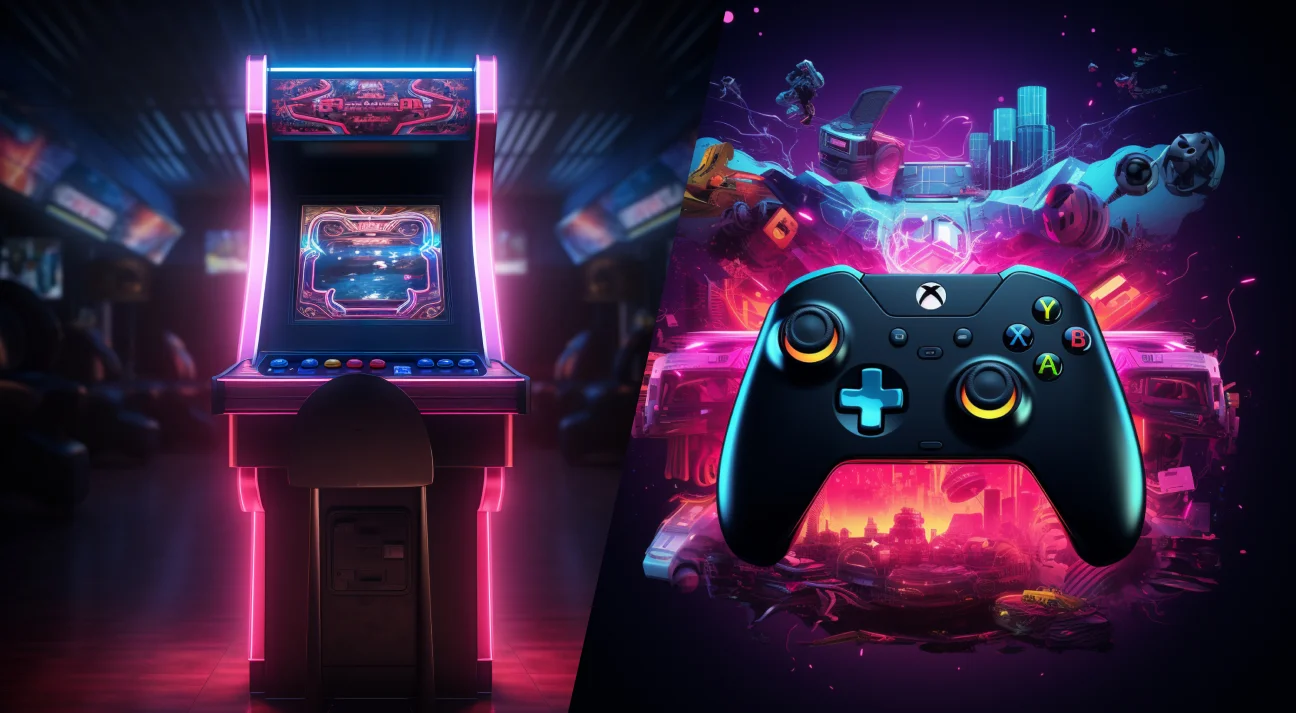Introduction
Shooter games have come a long way since their early arcade origins. What started as simple, pixelated action has evolved into complex, immersive experiences with advanced graphics, intricate gameplay mechanics, and expansive worlds. This article explores the evolution of shooter games, tracing their development from arcade classics to modern masterpieces.
Early Beginnings: Arcade Classics
The roots of shooter games can be traced back to the arcade era of the 1970s and 1980s. These early titles set the foundation for the genre with their straightforward yet addictive gameplay.
- Space Invaders (1978): One of the earliest and most influential shooter games, Space Invaders introduced players to the concept of defending Earth from waves of alien invaders. Its simple mechanics and escalating difficulty laid the groundwork for future shooter games.
- Asteroids (1979): Asteroids offered players a different kind of shooting experience with its vector graphics and multi-directional controls. Players navigated a spaceship, shooting asteroids and avoiding collisions, showcasing the potential for dynamic and engaging gameplay.
- Galaga (1981): Building on the success of Space Invaders, Galaga added new elements, including enemy patterns and power-ups. Its blend of strategy and action made it a beloved classic in the shooter genre.
The Rise of First-Person Shooters
The 1990s marked a significant shift in the shooter genre with the rise of first-person shooters (FPS). This era introduced new perspectives, gameplay mechanics, and technological advancements.
- Doom (1993): Doom revolutionized the genre with its immersive 3D environment and fast-paced action. It popularized the FPS genre, influencing countless games that followed with its level design, monster encounters, and multiplayer modes.
- Quake (1996): Quake continued to push the boundaries of FPS games with its fully 3D environments and advanced graphics. It introduced online multiplayer, setting the stage for competitive gaming and the rise of esports.
- Half-Life (1998): Half-Life combined FPS action with a compelling narrative, elevating the genre by integrating story elements into gameplay. Its innovative design and engaging storylines set new standards for FPS games.
The Golden Age of Modern Shooters
The 2000s and 2010s saw the emergence of modern shooters, characterized by high-definition graphics, realistic mechanics, and expansive game worlds.
- Call of Duty Series: The Call of Duty series became a defining force in modern shooters, offering intense combat scenarios, cinematic experiences, and expansive multiplayer modes. Games like Call of Duty 4: Modern Warfare (2007) and Call of Duty: Black Ops (2010) set new benchmarks for the genre.
- Battlefield Series: Known for its large-scale battles and destructible environments, the Battlefield series provided players with epic multiplayer experiences. Titles like Battlefield 3 (2011) and Battlefield 4 (2013) showcased the franchise’s focus on realism and tactical gameplay.
- Overwatch (2016): Overwatch introduced a hero-based shooter format, combining team-based combat with unique character abilities. Its vibrant art style, diverse roster, and emphasis on teamwork brought a fresh perspective to the genre.
The Rise of Tactical and Battle Royale Games
In recent years, tactical shooters and battle royale games have gained prominence, offering new twists on the genre.
- Rainbow Six Siege (2015): Rainbow Six Siege emphasizes tactical gameplay and team coordination, featuring destructible environments and operator-based mechanics. Its focus on strategy and realism has made it a favorite in the competitive scene.
- Apex Legends (2019): Apex Legends introduced innovative features to the battle royale genre, including character abilities and a unique ping system. Its fast-paced action and team-based mechanics have garnered widespread acclaim.
- Fortnite (2017): Fortnite revolutionized the battle royale genre with its building mechanics and frequent updates. Its vibrant graphics, engaging gameplay, and social features have made it a cultural phenomenon.
The Future of Shooter Games
As technology continues to advance, the future of shooter games looks promising. Virtual reality (VR) and augmented reality (AR) are expected to play significant roles in shaping new experiences. The integration of advanced AI, realistic physics, and immersive environments will further enhance the genre, offering players increasingly sophisticated and engaging gameplay.

Conclusion
The evolution of shooter games reflects the broader changes in technology, gameplay, and player expectations. From the simple pixelated action of arcade classics to the complex, immersive experiences of modern masterpieces, shooter games have continuously pushed the boundaries of what’s possible. As the genre continues to evolve, it will undoubtedly bring new innovations and experiences to gamers around the world.

